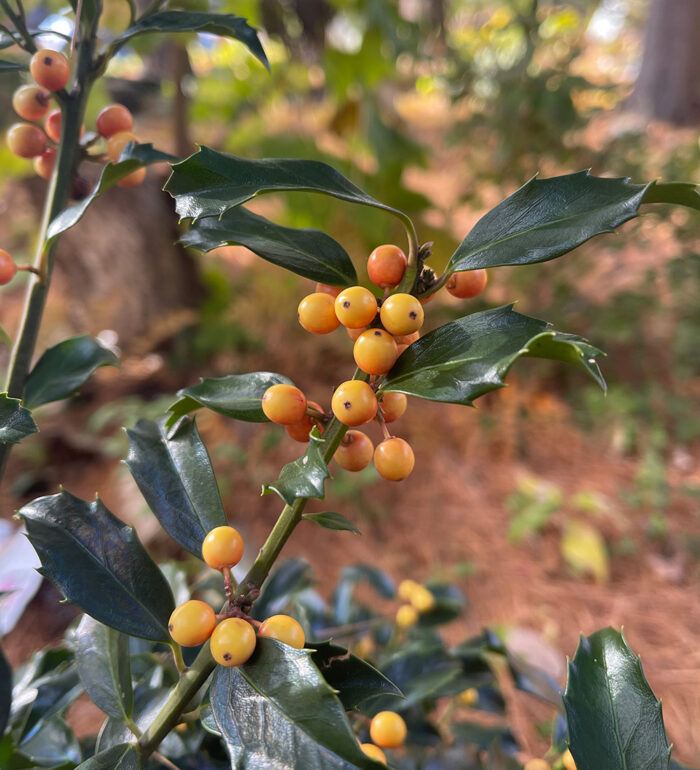
Holly (Ilex spp. and cvs., Zones 5–9) remains underused in many gardens in the Northeast, yet few trees and shrubs offer as many benefits as hollies do. The popular English holly (I. aquifolium, Zones 6–9) is typically not hardy in most of the region, but there are plenty of hollies, both evergreen and deciduous, that add tremendous value even to gardens in the most northern parts of the region.
Holly berries shine late in the season and attract wildlife
The benefits that hollies bring are generally expressed best in autumn and winter. The fruit (berries) themselves are a feature of both evergreen types as well as deciduous species. All hollies are deer resistant, but they are an excellent food source for birds such as overwintering robins.
Two plants are needed to produce berries
Hollies are dioecious, meaning that male and female reproductive systems occur on different plants. Both male and female plants produce flowers, and female plants produce berries after successful cross-pollination. If your holly isn’t producing berries, it is either a male plant or a female plant with no males nearby. Be sure to install at least one male and one female variety when you plant your hollies. The names of the cultivars often give you a clue as to the sex of the plant.
Hollies that look alike may not be equally hardy
Finding a hardy holly requires attention to species and hardiness zone ranges. Many evergreen hollies look alike when immature. For example, the more tender English holly may only be hardy to New York City, but the nearly identical American holly, which is native to the eastern part of North America, can be hardy as far north as southern New Hampshire. Here are a few of the best hardy hollies for gardens in the Northeast.
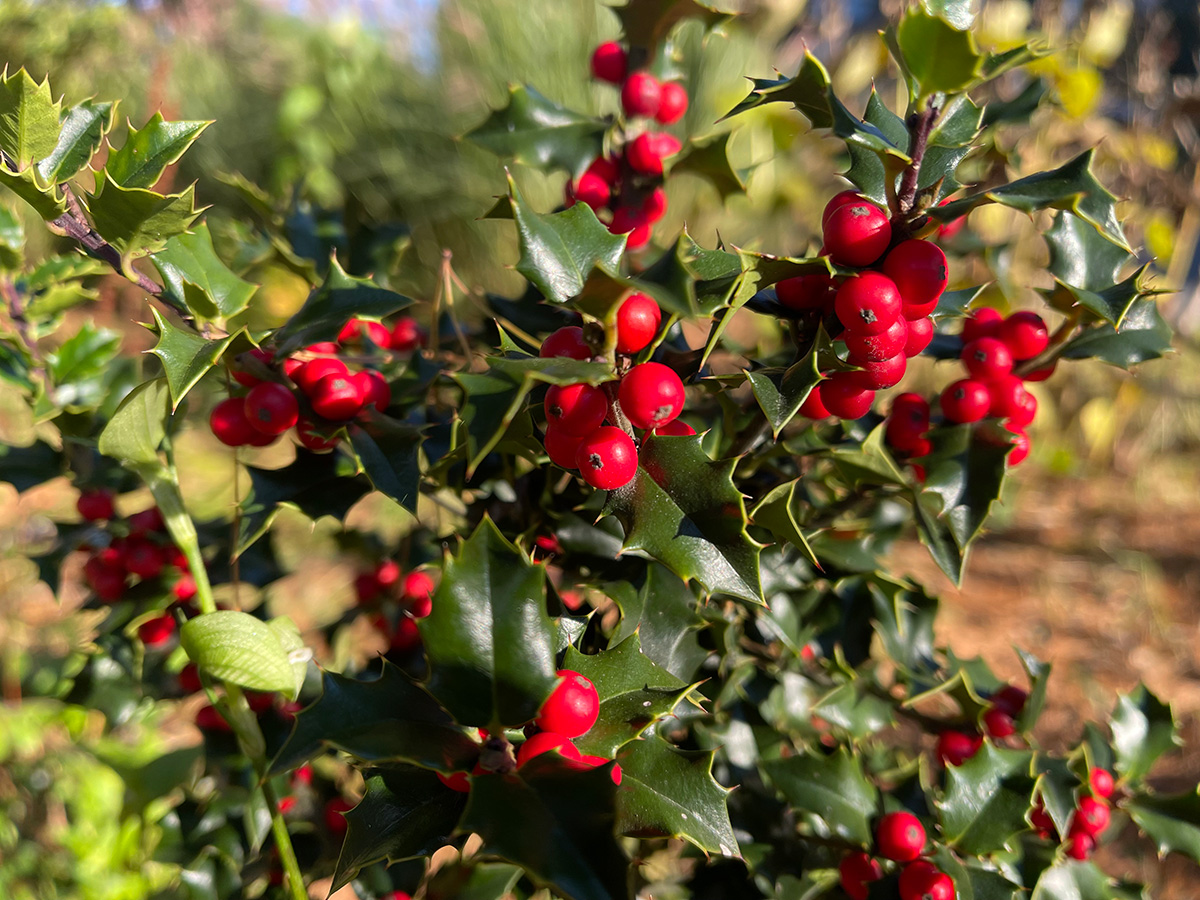
Blue holly
I. × meserveae, Zones 4–7
Commonly found at garden centers throughout much of the Northeast, these shrubby hollies provide gardeners with some of the best benefits the genus has to offer. These hollies typically grow in a bushy habit, reaching 7 to 10 feet tall with loads of berries and dark, glossy foliage. All originate from a cross made between tender English holly and cold-hardy Tsuru holly (I. rugosa, Zones 3–6). Many cultivar names use the word “blue.” Most are hardy to Zone 5 or 4, and some are hardy to Zone 3. Look for ‘Blue Princess’, which is a female fruiting variety, or ‘Blue Prince’, a male. Also consider ‘Blue Stallion’, a male, and China Girl™ (I. ‘Mesog’), a female.
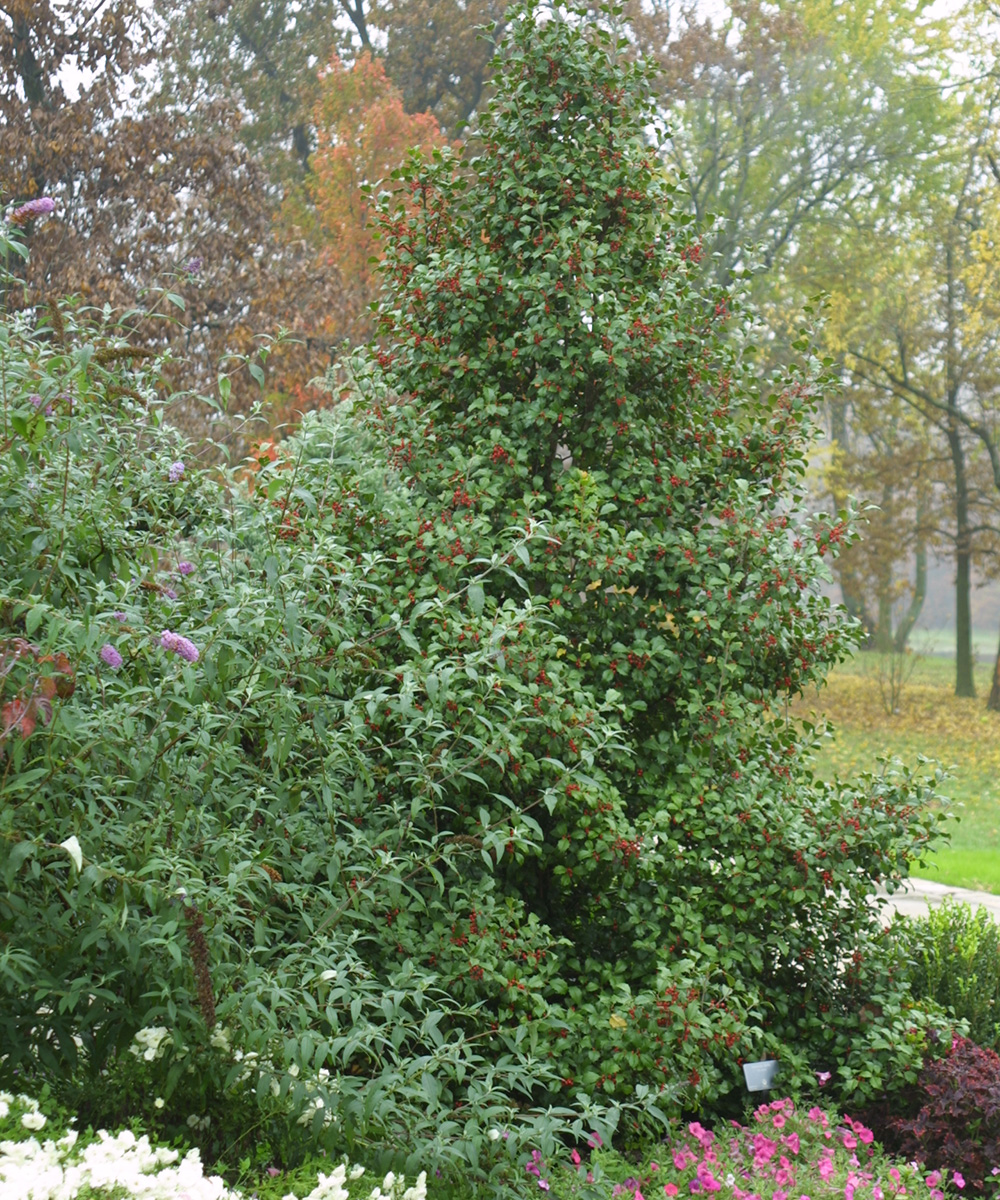
American holly
I. opaca, Zones 5–9
Big holly trees seem to have fallen out of fashion, but perhaps it’s time to reintroduce tall, berried evergreens to our gardens. With over 1,000 varieties, there are plenty of American hollies to choose from. But you’ll most likely need to order a plant from an online source unless you live close to a large, well-stocked nursery.
Many varieties grow 30 to 40 feet tall in 25 years and have that classic holly-shaped, glossy foliage and gorgeous red (or yellow) berries. There are many varieties to choose from that vary in height, shape, and berry color. Just be sure to check the ultimate size and hardiness for the particular one you are considering so that you can avoid surprises. (Yellow-fruited types are slightly more tender—to Zone 6). For female selections, look for ‘Cave Hill No. 1’ and ‘Merry Christmas’. ‘Merry Christmas’ has a tall, pyramidal shape with red berries. ‘Canary’ is a yellow-berried female variety. For males, look for ‘Jersey Knight’ and the hybrid ‘Big John’, which are both commonly used as pollinators for the female American holly cultivars. One male can pollinate at least five females within a few acres.
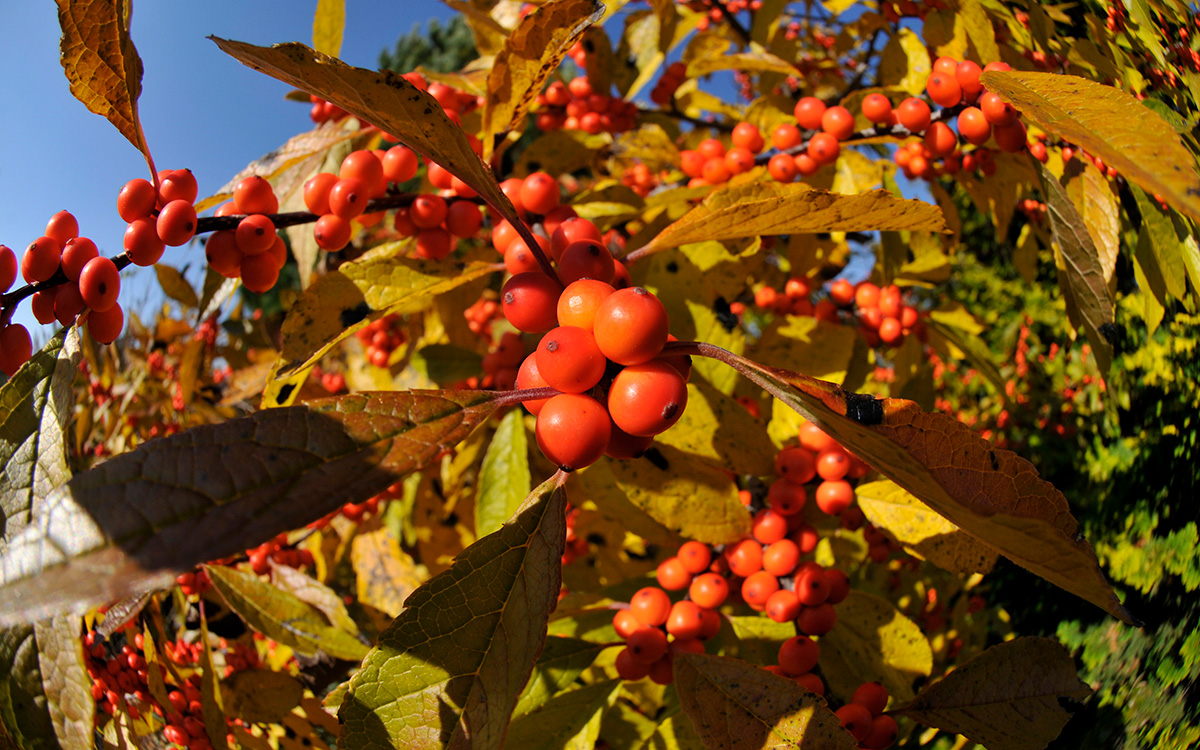
Winterberry
Ilex verticillata, Zones 3–9
While the Northeast-native, deciduous winterberry is becoming more common in commercial plantings, many people never think of this plant as a relative of the evergreen holly. But it is indeed a true holly. A familiar roadside shrub, native winterberry puts on a show in late autumn. However, selected cultivars are far superior as garden plants.
Winterberries are a bit more selective about pollination partners, but only because some male selections bloom a few days before or after a female selection does. If you are only getting a few berries, check to see if you have the proper mate for your plant. A good tip is to buy male selections that are in bloom at the same time at the nursery or to research what variety is the best pollinator for your female selection. Many online retailers will also suggest a pollination partner when you look up a female variety.
Female varieties such as Berry Heavy® (I. verticillata ‘Spravy’) or Little Goblin® Orange (I. verticillata ‘NCIV2’) are best pollinated by the male ‘Jim Dandy’, while the variety Berry Poppins® (I. verticillata ‘FarrowBPop’) has the heaviest fruit set with a nearby Mr. Poppins® (I. verticillata ‘FarrowMrP’). Some yellow-berried varieties such as ‘Winter Gold’ are known to have heavier fruit sets with the male varieties ‘Apollo’ (which is a hybrid) or ‘Southern Gentleman’.
As for pests, hollies are rather resilient and are rarely plagued by pests if grown in good soil. Generally, problems only occur on the foliage and are often more cosmetic than anything else. Leaves are sometimes damaged by leaf spot (black spots on leaves) or leaf miner insects (which produce winding paths as if someone scribbled on the leaf). Occasional outbreaks of scale or chlorosis (yellowing of leaves) can occur, but only if the pH is too high. This is rarely an issue in most Northeastern gardens.
—Matt Mattus is the author of two books: Mastering the Art of Flower Gardening and Mastering the Art of Vegetable Gardening. He gardens in Worcester, Massachusetts.
Fine Gardening Recommended Products

ARS Telescoping Long Reach Pruner
Fine Gardening receives a commission for items purchased through links on this site, including Amazon Associates and other affiliate advertising programs.

DeWalt Variable-Speed Cordless Reciprocating Saw with 6-Piece Saw Blade Set
Fine Gardening receives a commission for items purchased through links on this site, including Amazon Associates and other affiliate advertising programs.
- 18.31 x 6.13 x 4 inches
- 1-1/8-inch stroke length
- Variable speed trigger with 0-3000 spm
- DW4856 Metal/Woodcutting Reciprocating Saw Blade Set, 6-Piece

DeWalt Variable-Speed Cordless Reciprocating Saw
Fine Gardening receives a commission for items purchased through links on this site, including Amazon Associates and other affiliate advertising programs.
- 18.31 x 6.13 x 4 inches
- 1-1/8-inch stroke length
- Variable speed trigger with 0-3000 spm


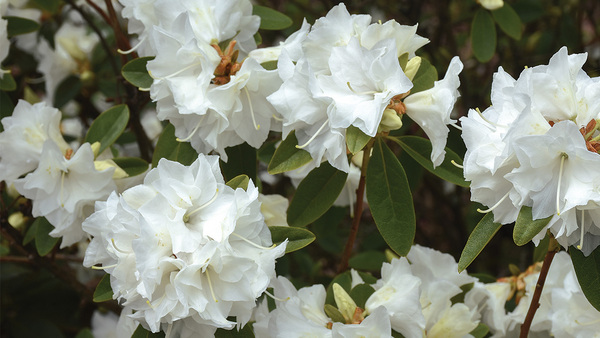

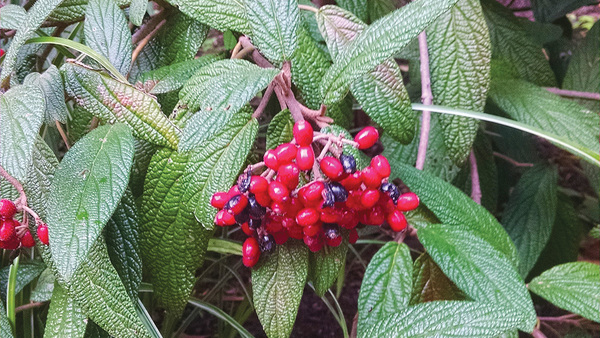














Comments
Log in or create an account to post a comment.
Sign up Log in